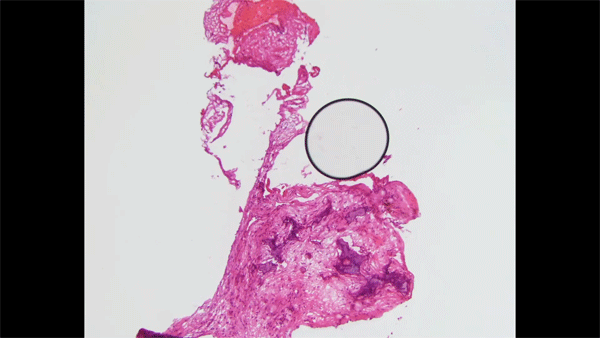Uncovering HPV and Hepatitis Complications With Ear, Nose & Throat Cancers
By Fallon Davis
DR. UMAMAHESWAR DUVVURI is the Head and Neck surgeon and Director of Robotic program at the University of Pittsburgh.
His specialty is using robotics to treat patients with head and neck cancer.
We talked with him in regards to HPV and Hepatitis and how it relates to oral, neck and head cancer in his patients.
What are some of the most difficult head and neck cancers to treat?
Some of the most difficult cancers to treat are the ones presented with the most advanced stages. Ninety percent of head and neck cancers are from squamous carcinomas and these cancers arrive from the squamous cells of the head and neck.
These squamous cells are lined within our mouth, nose, skin and tongue. These cells can become malignant and these are some of the most common forms of head and neck cancer.
 I begin diagnosis with a biopsy. Often times people present with a lymph node in the neck which could be malignant. Usually an adult with a lump in the neck has cancer until proven otherwise.What is your typical procedure when diagnosing Squamous Cell Carcinomas?
I begin diagnosis with a biopsy. Often times people present with a lymph node in the neck which could be malignant. Usually an adult with a lump in the neck has cancer until proven otherwise.What is your typical procedure when diagnosing Squamous Cell Carcinomas?
Typically adults don’t get lumps in their neck but kids can. If an adult gets a lump in the neck over the age 40 we think it is malignant. Therefore, I usually start with an imaging scan to locate the lump. I then follow-up with a needle biopsy opposed to cutting into the neck at this point. After the pathologist looks at a piece of the tumor and if he/she is not clear on a diagnosis, then we may have to arrange a surgery to make an incision to remove a piece of or the whole part of the lymph node. We try to avoid incision as much as possible because it is less invasive and we want to avoid any tumor spilling into the neck.

Do you feel Human Papillomavirus (HPV) are common causes of head and neck cancer?
Yes. HPV is considered a sexual transmitted virus and is one of the most common causes of head and neck cancer now. We expect by 2020, there will be more people diagnosed with head and neck cancer than cervical cancer.
HPV is growing at an alarming rate but probably because not many people were exposed to the virus years ago and now have developed the disease. Just like cervical cancer, a woman will get it her teens and not develop the disease until she is in her forty’s or fifty’s.
It is a very long incubation period so many of these cancers can be dormant for a long time. If the oral cancer is caused by HPV the cancer is very curable. The cure rate for people with HPV is about ninety percent if they’re non-smokers and sixty percent if they are smokers. Although HPV is curable, the standard care is radiation and chemotherapy.
What are some of the most difficult head and neck cancers to treat?
Some of the most difficult cancers to treat are the ones presented with the most advanced stages. Ninety percent of head and neck cancers are from squamous carcinomas and these cancers arrive from the squamous cells of the head and neck.
These squamous cells are lined within our mouth, nose, skin and tongue. These cells can become malignant and these are some of the most common forms of head and neck cancer.
What is your typical procedure when diagnosing Squamous Cell Carcinomas?
I begin diagnosis with a biopsy. Often times people present with a lymph node in the neck which could be malignant. Usually an adult with a lump in the neck is cancer until proven otherwise.
Typically adults don’t get lumps in their neck but kids can. If an adult gets a lump in the neck over the age 40 we think it is malignant. Therefore, I usually start with an imaging scan to locate the lump. I then follow-up with a needle biopsy opposed to cutting into the neck at this point. After the pathologist looks at a piece of the tumor and if he/she is not clear on a diagnosis, then we may have to arrange a surgery to make an incision to remove a piece of, or whole part of the lymph node. We try to avoid incision as much as possible because it is less invasive and we want to avoid any tumor spilling into the neck.
Do you feel oral sex and Human Papilloma Virus (HPV) are common causes of head and neck cancer?
Yes. HPV is considered a sexual transmitted virus and is one of the most common causes of head and neck cancer now. We expect by 2020 there will be more people diagnosed with head and neck cancer than cervical cancer.
HPV is growing at an alarming rate but probably because not many people were exposed to the virus years ago and now have developed the disease. Just like cervical cancer, a woman will get it in her teens and not develop the disease until she is in her forty’s or fifties.
It is a very long incubation period so many of these cancers can be dormant for a long time. If the oral cancer is caused by HPV the cancer is very curable. The cure rate for people with HPV is about ninety percent if they’re non-smokers and sixty percent if they are smokers. Although HPV is curable, the standard care is radiation and chemotherapy.
I know if throat cancer is caught early it is curable. If throat cancer spreads into the body, is it possible to cure a patients cancer? What is the procedure when their cancer starts to spread and become severe? Can they be cured if the cancer spreads too far?
Usually not. If it is HPV related cancer can still be treated. If the patient is treated with chemotherapy, they still have long-time survival of maybe five to six years after being treated because these metastases melt away. So, currently we are using genetic sequences to try to find out what is happening.
What are the benefits of your robotic surgery?
If you have early stage cancer or cancer relatively small in size, I recommend robotic surgery and radiation treatment for my patients. University of Pittsburgh is working on a clinical trial where we’re offering patients robotic surgery and no chemotherapy at all. I find that this helps patients get back to work faster and recover quicker and they won’t have all the side effects.
How do you feel this drug will affect your neck and head cancer patients health? Do you feel this drug is revolutionary in the efforts to cure throat cancer/ENT?
If the cancer still spreads we often give patients therapy such as Keytruda or Nivolumab which is also the cause of a recent checkmate study. The checkmate trial has demonstrated a survival benefit for patients on these chemotherapies. The study is a great opportunity and great for people to have access to it, but it is not a standard of care. This is for people who have advanced disease or metastatic disease and is a trial for these types of patients.
Why do you think this is the case and Hep C patients have more of a risk? How would you handle a patient with Hepatitis C and Cancer differently from your other patients with some other type of Head or Neck cancer?
Hepatitis C is a very interesting topic and we don’t know exactly how it works or why it causes people to have it. We know HIV/AIDs exposes people to cancer because it makes the immune system suppressed. We think whats happening with Hep C is called a pro carcinogen and not suppressed by itself causes cancer in the head and neck. In the liver hepatitis itself causes hepatomas. For the head and neck it is very similar and I think it will have a linkage and will unfortunately help these people develop cancers. Right now, we do not treat Hep C patients any differently than a cancer patient because it is a relatively new area and we are working to understand how this happens.

Can you tell me about the goal of your peer-reviewed paper in JAMA Otolaryngology with pathologist Dr. Chiosea?
Going back to the concept of surgery what are we going to do to remove all the cancer? We wanted to know what is the best way to figure out if we removed all the cancer or not? So think of cancer as a plant with weeds on it and if you just pluck off the top of the weed and leave the roots it will come back. You need to get all the roots out so how do you know how deep they will go?
You have to dig around in the dirt and take the weed out with the root and take out some normal soil. So when you do that, how do you know you got all the roots out? Do you look at what you have in your hand or what is in the hole? You have to look at both and this is what many people aren’t doing consistently. Many doctors would just take it out and would check to see what was left in the “ground.” But the problem is when you make a big hole, there is a whole lot to look at. You have to keep digging around the edges and make sure nothing is left. So, for our paper, we went back and looked at all these patients that had early cancer in the tongue because it is a simple organ.
We checked the edges that came from the patient which were almost always negative. We would then take the actual tissue from the tumor and we found that if all the measures were negative, the patients would have a better chance of survival.

